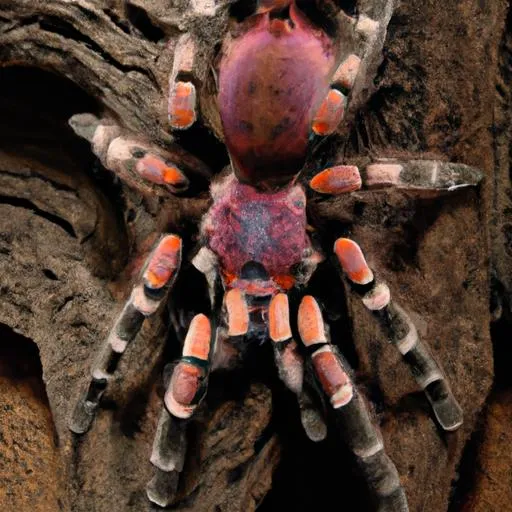Pink Knee Tarantula Care Essentials
Caring for a Pink Knee Tarantula, also known as E. pulchrakra, is a rewarding experience. These stunning creatures, with their striking pink markings, make captivating pets. However, their well-being depends on providing the correct environment and care. This guide will help you understand the essential aspects of Pink Knee Tarantula care, ensuring your tarantula lives a long, healthy, and happy life. From setting up the perfect enclosure to understanding their unique behaviors, we’ll cover everything you need to know to become a successful Pink Knee Tarantula owner. Remember, understanding their needs is the first step towards providing excellent care and enjoying your fascinating pet. Let’s dive in and explore the specifics of creating the ideal home for your Pink Knee Tarantula.
Choosing the Right Enclosure
The enclosure is the foundation of your Pink Knee Tarantula’s habitat. It should provide a secure, comfortable, and enriching environment. The right setup minimizes stress and promotes natural behaviors. An ill-equipped enclosure, conversely, can lead to stress, poor health, and even escape. Consider the size, material, ventilation, and overall design. A well-chosen enclosure is more than just a container; it is your tarantula’s entire world. Ensuring the right home setup is not just about aesthetics but about the animal’s welfare, which is essential for the happiness of your Pink Knee Tarantula.
Enclosure Size and Material
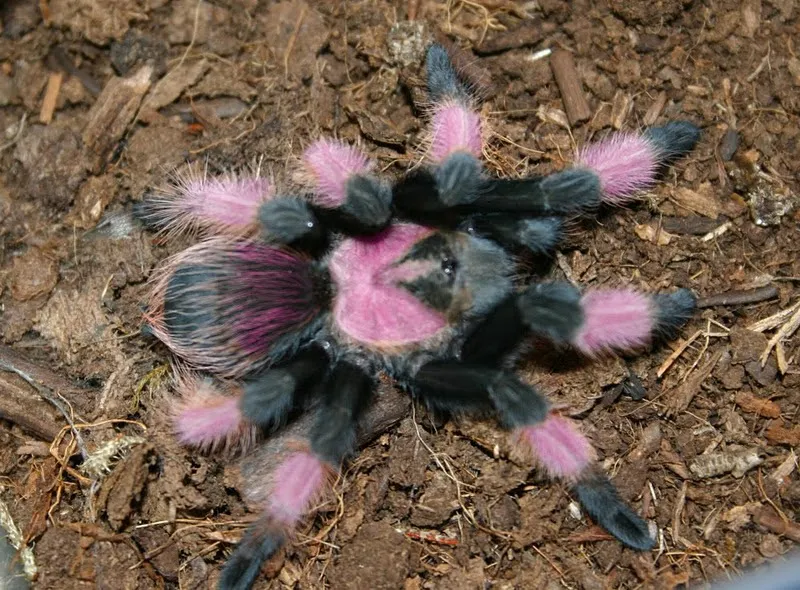
A general rule is to provide an enclosure that is at least three times the tarantula’s leg span in width and length. For a juvenile Pink Knee Tarantula, a 10-gallon tank might suffice. As they grow, a 20-gallon long tank or larger is often necessary. Glass or clear plastic enclosures are popular due to their visibility, allowing you to observe your tarantula. Ensure the enclosure has a secure, tight-fitting lid to prevent escapes. Ventilation is crucial to prevent mold and maintain healthy humidity levels, so make sure the enclosure has adequate cross-ventilation. Avoid using materials that can be toxic or harmful to your pet.
Substrate Selection
The substrate is the bedding material in the enclosure, playing a vital role in maintaining humidity, providing a burrowing environment, and absorbing waste. A mix of substrate materials is often ideal. A popular choice is a combination of peat moss, coconut fiber (eco-earth), and a bit of vermiculite. This mixture retains moisture well, allowing your tarantula to create a comfortable burrow and providing it with the necessary humidity. The substrate should be deep enough for the tarantula to burrow, generally about 4-6 inches deep. It is essential to keep the substrate clean by removing any uneaten food and fecal matter to maintain a healthy environment.
Temperature and Humidity
Maintaining the correct temperature and humidity is vital for the health and well-being of your Pink Knee Tarantula. These tarantulas thrive in temperatures between 75-85°F (24-29°C). Use a thermometer to monitor the temperature within the enclosure. Supplemental heating, such as a heat mat placed on the side of the enclosure (never under the enclosure), may be necessary in colder climates. Humidity levels should be maintained between 65-75%. Use a hygrometer to monitor humidity. Achieve the proper humidity levels by misting the enclosure with dechlorinated water once or twice a week, depending on the ventilation and substrate used. Avoid excessive misting, which can lead to mold growth.
Maintaining the Right Conditions
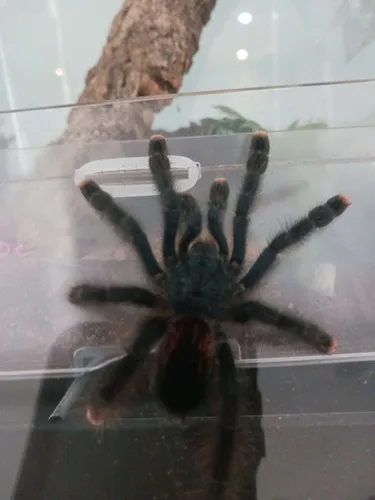
Regularly checking and adjusting the temperature and humidity is essential for your Pink Knee Tarantula’s comfort and health. Ensure the enclosure is not placed in direct sunlight or near heat sources that could cause temperature fluctuations. If using a heat mat, monitor the temperature closely to prevent overheating. The best approach to maintaining the right conditions is to monitor your setup daily and make small adjustments as needed. Having a consistent environment is the best way to keep your tarantula healthy. Also, consider the season changes to maintain and control the environmental conditions.
Monitoring and Adjustments
Use digital thermometers and hygrometers for accurate readings of temperature and humidity levels. Make small adjustments as needed, such as misting more frequently or increasing ventilation, to maintain the desired range. Observing your tarantula’s behavior can also indicate if the environment is suitable. For example, a tarantula that spends all its time on the surface might indicate that the substrate is too dry, while a tarantula that remains in its burrow most of the time might indicate that the humidity is too high. Also, monitor the enclosure regularly for mold or other problems. Act promptly to prevent diseases.
Feeding Your Pink Knee Tarantula
Feeding is a crucial aspect of Pink Knee Tarantula care, directly impacting its health, growth, and overall well-being. Understanding their dietary needs, appropriate food items, and feeding frequency is crucial to maintaining a healthy and happy tarantula. Providing the right nutrition is essential for their development and to support their active lifestyle. A well-fed tarantula is more likely to thrive and exhibit its natural behaviors, making your experience as a tarantula owner even more rewarding. This section will cover all aspects of feeding, ensuring your Pink Knee Tarantula receives the necessary nutrients to flourish.
Appropriate Diet
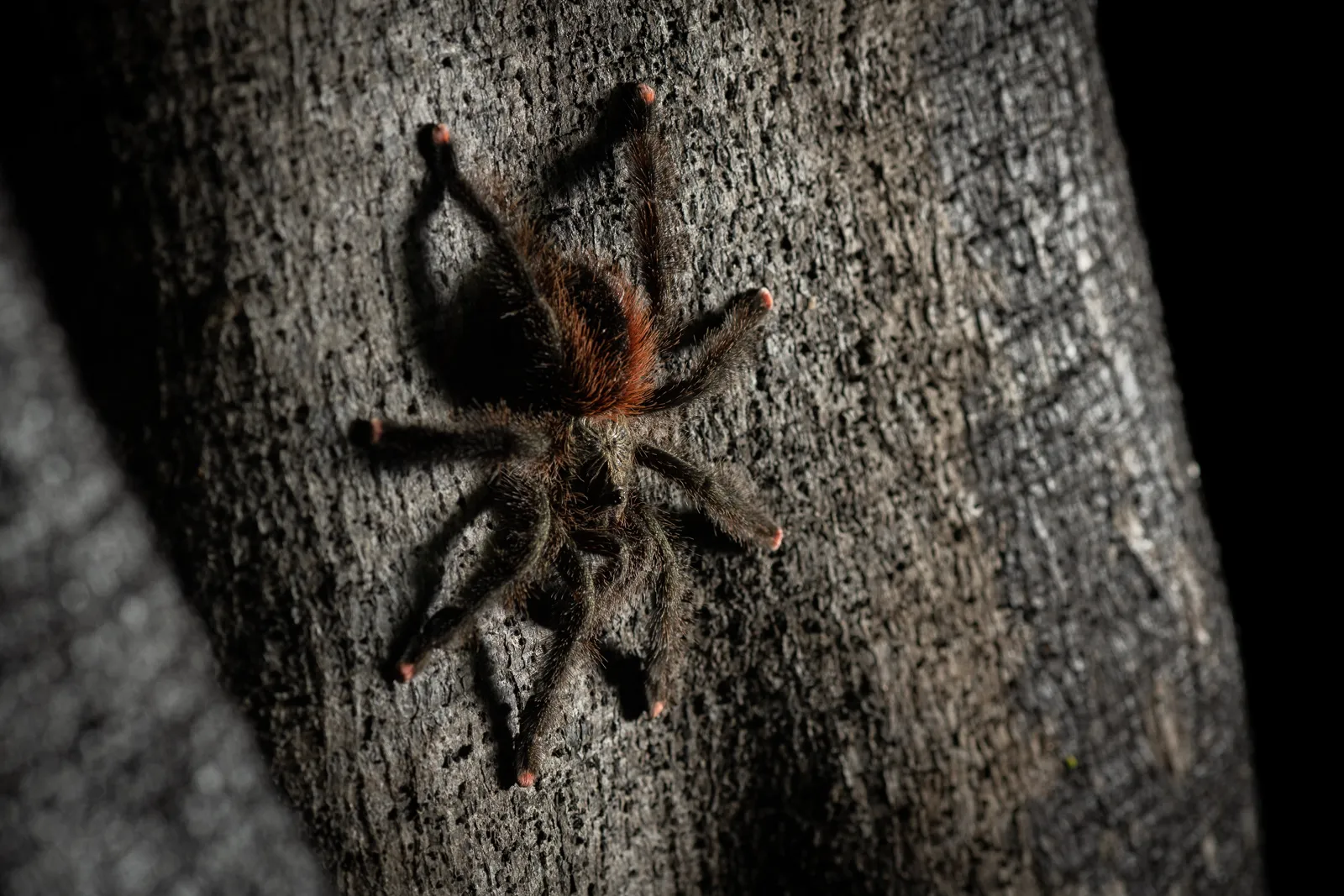
The Pink Knee Tarantula is an opportunistic feeder, meaning it will consume a variety of insects. Crickets, mealworms, dubia roaches, and small hornworms are all suitable food options. Always ensure the insects are gut-loaded (fed nutritious food) before offering them to your tarantula. This enhances the nutritional value of the insects, providing your tarantula with a balanced diet. Avoid feeding wild-caught insects, which may carry parasites or pesticides. Also, remove any uneaten food within 24 hours to prevent mold growth and maintain a clean environment for your tarantula. Provide fresh food at a consistent rate.
Frequency of Feeding
The frequency of feeding depends on the tarantula’s age and size. Spiderlings (young tarantulas) should be fed 2-3 times a week, while adults can be fed once a week or every other week. Observe your tarantula’s abdomen to determine if it is well-fed. A healthy tarantula will have a plump abdomen. If your tarantula refuses food, it might be molting or stressed. Do not offer food if the tarantula is in premolt (preparing to molt). Adjust the feeding schedule accordingly, and do not overfeed. It is also essential to note that food requirements may vary based on their life stage.
Watering Your Tarantula
Fresh, clean water is crucial for the survival of any tarantula. Provide a shallow water dish with fresh, dechlorinated water. Ensure the water dish is shallow enough to prevent your tarantula from drowning. A cotton ball can be used in the water dish, especially for spiderlings, to prevent drowning. Regularly clean the water dish to prevent the growth of bacteria or algae. Consider using a water gel product for added hydration and to maintain humidity. Also, keep water available at all times, as your tarantula needs this for hydration and overall well-being.
Handling and Interaction
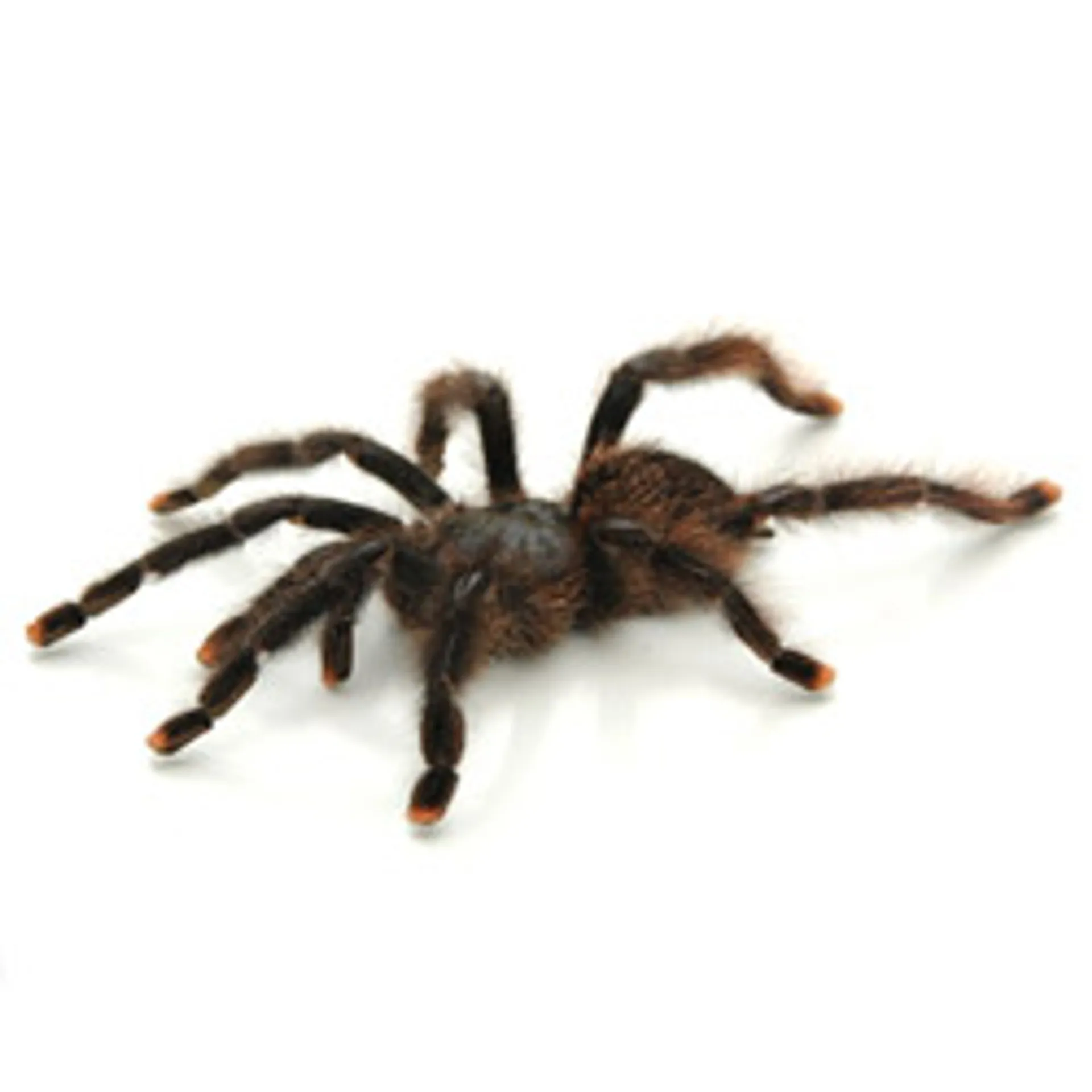
While Pink Knee Tarantulas are generally docile, handling them is not always necessary. The practice carries risks for both the tarantula and the handler. Therefore, it is essential to approach handling with caution and prioritize the tarantula’s well-being. Understanding when handling is appropriate, the correct techniques, and how to recognize stress can help minimize risks and provide a positive experience. This section will guide you through the dos and don’ts of handling and interaction, ensuring your safety and your tarantula’s peace of mind. Always prioritize the tarantula’s safety and well-being before considering any interactions.
When to Handle
Handling a Pink Knee Tarantula is generally best avoided unless absolutely necessary, such as to move it for enclosure cleaning or health checks. Tarantulas are not naturally inclined to interact with humans, and handling can cause stress. If handling is unavoidable, do so with great care. Never handle a tarantula if it is in premolt, has recently molted, or shows signs of stress. Try to minimize handling to avoid stressing your tarantula. It is generally advisable to admire your Pink Knee Tarantula from afar, as observation is a great way to enjoy them.
How to Handle Safely
If you must handle your Pink Knee Tarantula, do so gently and close to the ground or over a soft surface. This minimizes the risk of injury if the tarantula were to fall. Use a soft, wide paintbrush to gently guide the tarantula if it is necessary. Always wash your hands thoroughly before and after handling to prevent the transfer of any substances or bacteria. Never handle the tarantula if you are not confident or if you are under the influence of anything that could affect your judgment. Remember, you are responsible for keeping your tarantula safe.
Recognizing Stress and Avoiding Harm
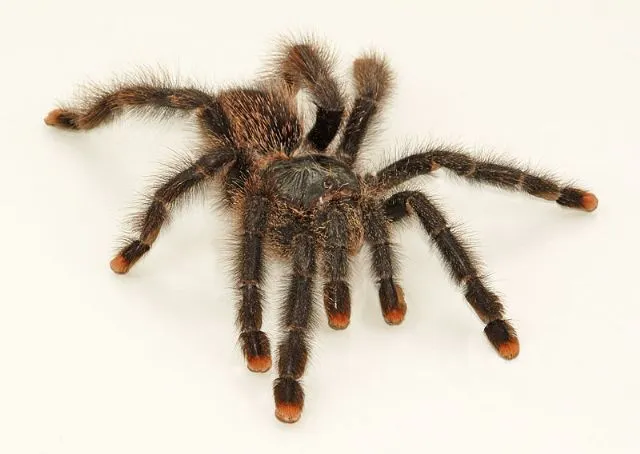
Observe your tarantula’s behavior to recognize signs of stress. A stressed tarantula may flick hairs from its abdomen, raise its front legs in a defensive posture, or try to escape. If you notice these signs, immediately cease handling and allow the tarantula to retreat. Avoid actions that might frighten your tarantula, such as sudden movements or loud noises. Respect your tarantula’s space and avoid handling it if it is not in the mood. Recognizing signs of stress is essential to minimize harm. Prioritize your tarantula’s well-being.
Health and Common Issues
Like all animals, Pink Knee Tarantulas can be susceptible to certain health issues. However, with proper care and observation, you can minimize the risk of illness and ensure your tarantula remains healthy. Regularly inspect your tarantula for any signs of illness or distress. This section will cover common health issues, how to identify them, and what measures you can take to ensure your tarantula’s well-being. Being proactive in recognizing and addressing any health concerns is crucial to your tarantula’s long and happy life. Also, keep an eye out for changes in behavior.
Identifying and Treating Common Diseases
Common health issues in Pink Knee Tarantulas include fungal infections, parasites, and injuries. Fungal infections can occur if the enclosure is too humid or has poor ventilation. Treat fungal infections by improving ventilation, removing contaminated substrate, and consulting a veterinarian experienced with tarantulas. Parasites are less common in captive tarantulas but can be introduced through live food. If you suspect a parasite infestation, consult a veterinarian. Injuries can occur during molting or handling. Provide appropriate medical care. Early detection and treatment of health issues can greatly improve the outcome for your tarantula. Also, maintaining a clean and controlled environment is the best way to avoid diseases.
Signs of a Healthy Tarantula
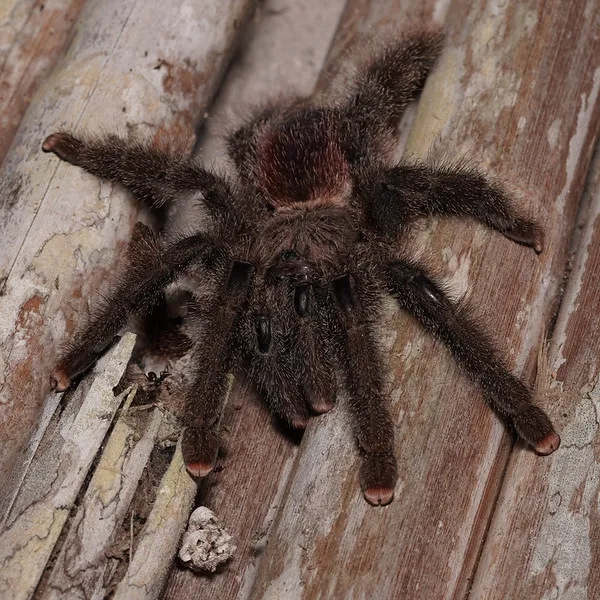
A healthy Pink Knee Tarantula exhibits several key characteristics. These include a plump abdomen, indicating good feeding habits; active behavior, exploring their enclosure and feeding well; and regular molting. The tarantula’s fangs, pedipalps, and other body parts should be intact and undamaged. The tarantula’s body should be free from any unusual growths or lesions. Being able to recognize the signs of a healthy tarantula will help you understand if any potential health issues need medical attention. Always observe your tarantula closely and learn about its behaviors.
Molting Process
Molting is a natural and essential process for Pink Knee Tarantulas, allowing them to grow and regenerate. During molting, the tarantula sheds its exoskeleton, revealing a new, larger one. Understanding the molting process, including preparation, the process itself, and post-molt care, is essential for providing appropriate support and minimizing stress during this critical time. Proper care during molting is crucial for your tarantula’s health. You should learn to recognize the signs of premolt and what to do during this period. Keep the enclosure undisturbed and provide the proper environment.
Preparing for Molting
Before molting, your Pink Knee Tarantula will exhibit several telltale signs. These include a loss of appetite, as they will stop eating several weeks before the molt. The tarantula’s abdomen may appear darker, and the skin between its segments may become thinner. Your tarantula may also become less active, spending more time in its burrow or hiding place. Provide a moist substrate to help with the molting process and ensure that the tarantula has access to water. Do not feed your tarantula if it is in premolt.
What to do During Molting
During molting, it’s crucial to avoid disturbing your tarantula. Keep the enclosure quiet, and do not attempt to handle the tarantula. The tarantula will typically flip onto its back, and the process can take several hours. Ensure the humidity levels are correct to facilitate the molting process. Do not attempt to assist the tarantula; interference can cause injury or death. Once the process is complete, the tarantula will remain in its new exoskeleton. Providing a stable and calm environment is very important during the molting process.
Post-Molting Care
After molting, the Pink Knee Tarantula’s exoskeleton is initially soft and vulnerable. Do not offer food for several days, allowing the fangs and exoskeleton to harden. Provide fresh water. Avoid handling the tarantula for at least a week after molting. This allows the tarantula to regain its strength. The colors of your tarantula will appear brighter after a molt. Observe your tarantula’s behavior and monitor its activity levels to ensure it recovers properly after the molt. It may also take a few days before they resume normal activities.
